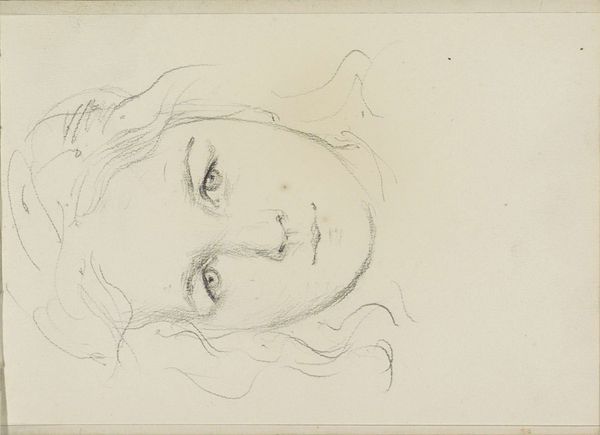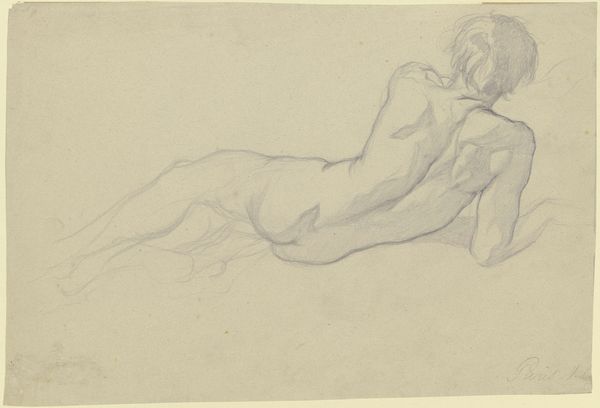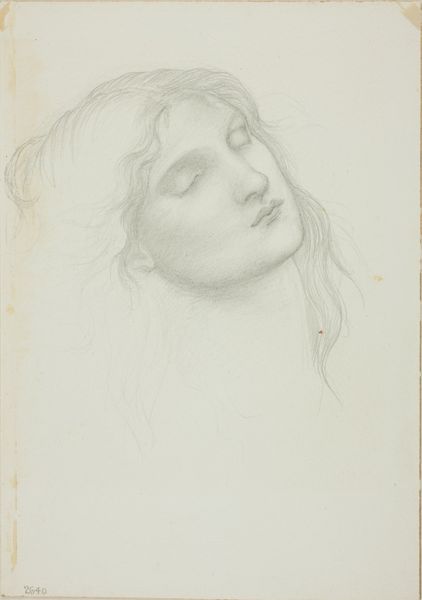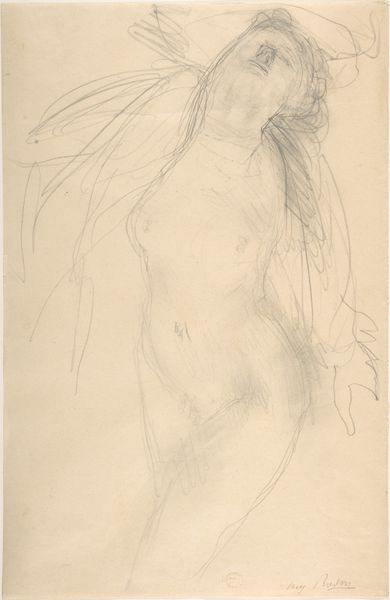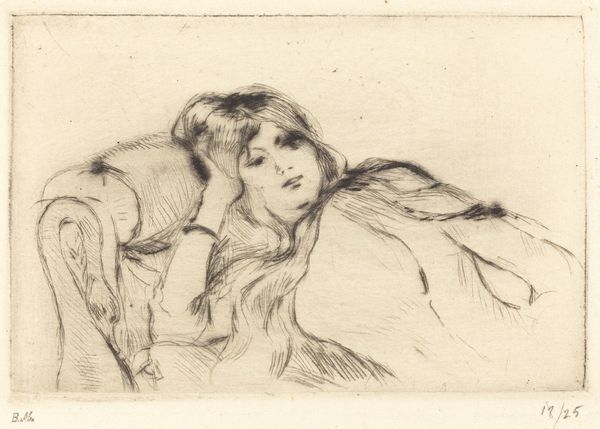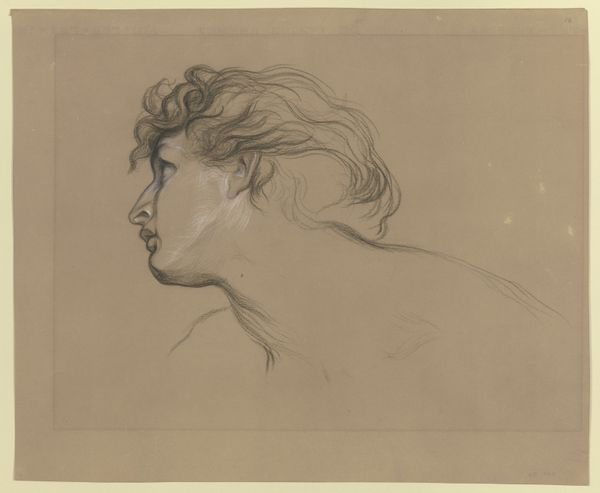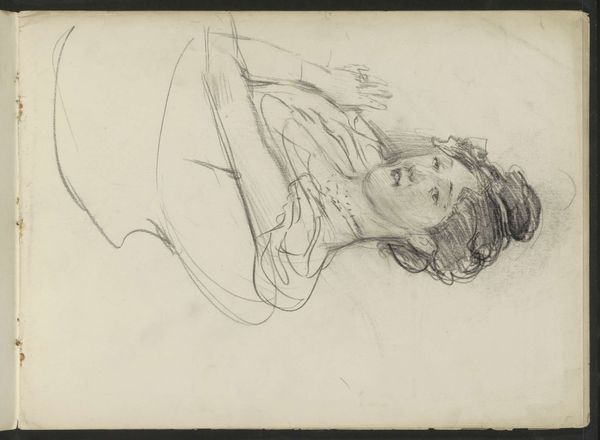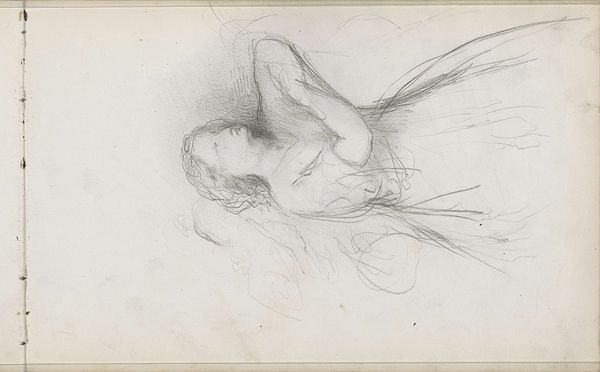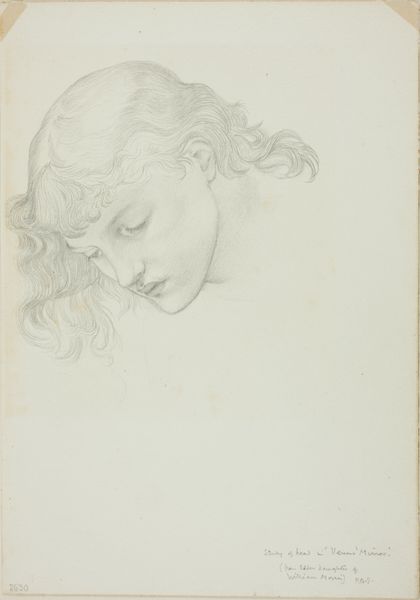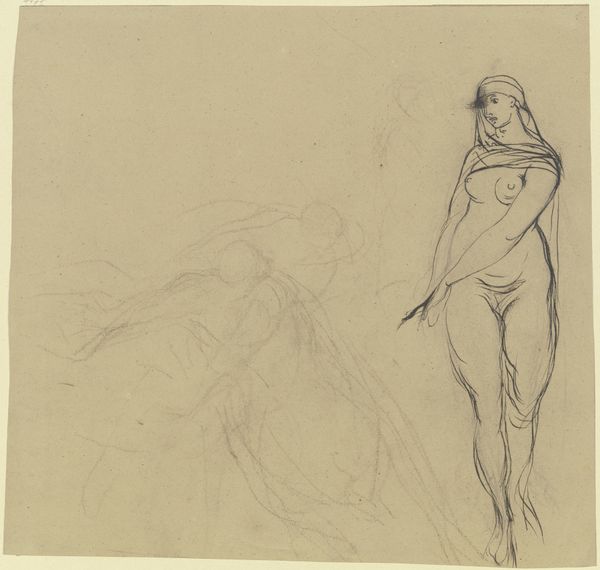
Copyright: Public Domain
Curator: Here we have "Die Köpfe Romeos und Julias aus _Romeo und Julia_" or, "The Heads of Romeo and Juliet from _Romeo and Juliet_" created by Victor Müller around 1869 to 1871. It is a drawing using pencil, charcoal, and chalk on paper. Editor: The delicate lines create such a vulnerable and pensive mood. There's a dreamlike quality to the way they're rendered; you can sense their inner turmoil without a need for elaborate detail. Curator: Indeed. Müller, associated with Romanticism and Academic art, situates these characters within a lineage of tragic, star-crossed lovers deeply embedded in the European psyche. Notice the distinct lack of theatricality. Müller forgoes spectacle. This wasn't meant for stage design; it’s an intimate, internalized study. The Städel Museum reminds us that it's a work on paper and shows a study of heads. Editor: That internalized quality speaks volumes. Romeo and Juliet are eternally youthful figures; in our cultural memory, they represent impulsive love meeting social structures with disastrous effect. To see them rendered this way—almost ghostly, suspended in charcoal—emphasizes their liminal existence between passion and death. Even today they influence depictions of youthful longing and unattainable romance in media. Curator: And Müller’s deliberate choice to use drawing—with its immediacy and potential for revision—highlights this as a study of affect, rather than a finished pronouncement. Drawing itself was gaining institutional recognition at this time as a legitimate art form, which shaped its value and how it would be consumed as art. The Romanticism here becomes about accessing deeper truths, unburdened from the academic strictures. Editor: Right, the very impermanence of the medium mirrors the ephemeral nature of their love, its intense and tragic brevity. In these almost photographic reproductions and prints derived from photographs, this kind of imagery helped define the look and feel of romantic agony. Seeing these familiar features distilled and brought forth from the symbols is like finding an essential idea within the famous tale. Curator: Absolutely. And when considered as part of Müller's broader career, one notices he often uses literary themes and characters. This shows art not only as decorative and beautiful, but as playing a crucial cultural and public role by representing key narratives. Editor: It adds an interesting layer to contemplate not just what we see here on the paper, but how our perceptions of this story are built from visual fragments that echo and transform over time. Curator: It highlights the lasting power of this imagery and story through time. Editor: I completely agree, it brings a quiet meditation to the forefront.
Comments
No comments
Be the first to comment and join the conversation on the ultimate creative platform.
